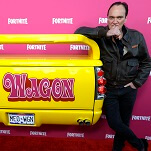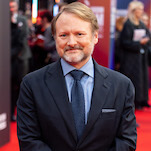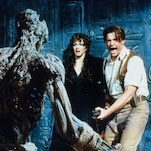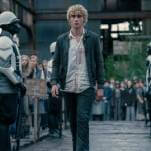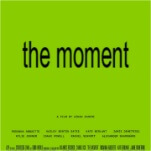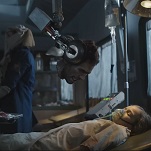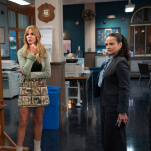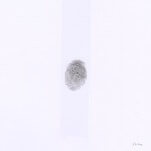Believe it or not, the sideshow is the least compelling part of Guillermo del Toro’s Nightmare Alley
Bradley Cooper, Cate Blanchett, and Rooney Mara star in this stylish but uneven carnival noir

Guillermo del Toro was born to make a carnival movie. The Oscar-winning writer-director has spent his career conjuring sympathetic monsters and romantic freaks. (He also modeled his home after a European cabinet of curiosities, a more sophisticated continental cousin to the American sideshow.) So when del Toro announced that he would be tackling William Lindsay Gresham’s 1946 novel Nightmare Alley—previously adapted into a 1947 film with Tyrone Power and Joan Blondell, but we’ll get to that in a minute—it seemed like a perfect fit. So how is an extended opening sequence set at a dusty Midwestern carnival the least compelling segment of the movie?
Because, alas, production design isn’t everything, though in a del Toro film, the textures and colors are enough to carry a viewer most of the way. When mysterious loner Stanton Carlisle (Bradley Cooper) wanders into a geek show run by the gregarious Clem Hoately (Willem Dafoe), he enters a beautifully rendered alternate universe dominated by shades of red and yellow—the colors of a traditional sideshow banner. The attractions have an intriguingly moralistic bent: There’s an astonishingly designed haunted house, for example, with a seven deadly sins theme. The geek himself, a desperate alcoholic who bites the heads off of chickens in exchange for booze, is portrayed here as a skittering creature reminiscent of Lord Of The Rings’ Gollum. This being a del Toro picture, we of course pity him.
The rest of the sideshow’s denizens are less memorable. Casting Toni Collette as Zeena, the kindly psychic who teaches Stanton the mediumship racket, would seem to be a slam dunk, as would securing Ron Perlman and David Strathairn as fellow carnies. But almost all of the impressive cast—which also includes Rooney Mara, Richard Jenkins, Holt McCallany, and Mary Steenburgen in key roles of varying sizes—seems tied down by the odd, muted tone. The only one who slips into the noir idiom like a pair of silk stockings is Cate Blanchett, perfectly cast as conniving, seductive psychiatrist Lilith Ritter. The film doesn’t really get going until Blanchett slinks in midway through, challenging Stanton’s supposed ability to read minds after he and “Electro-Girl” Molly (Mara) level up from traveling circuses to swanky nightclubs.





